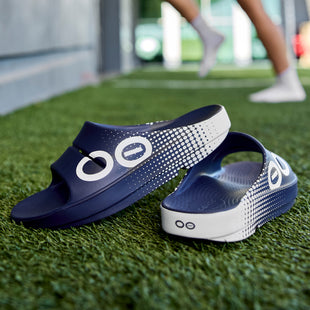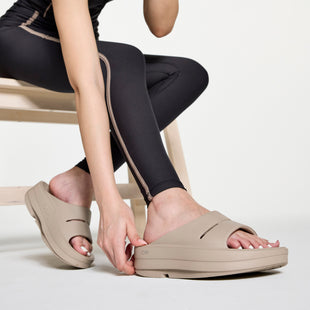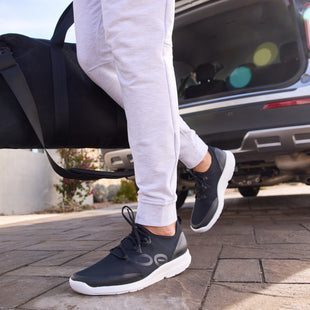As a personal trainer and running coach, I’m constantly witnessing others going too hard and fast during their sessions, especially on their recovery runs, as well as adding in extra training days. That extra run will make very little difference and do more harm than good.
There is a reason why rest days are crucial. Even the elites schedule in their rest days. Our body needs time for muscle repair, muscles to grow, and time for our minds to switch off.
The terms REST DAY and RECOVERY differ in so many ways but WHY should we include them in our training plans?
1. IT HELPS OUR BODY RESET AND REPAIR DAMAGED MUSCLE TISSUE
Whatever type of training you partake in, during that session you create microscopic tears within your muscles. The tears create the DOMS (Delayed Muscles Soreness) that you feel a few days after your workout. The body needs solid rest to repair the damage.
2. PREVENTS INJURY
If you don’t give time for the muscles to recover and repair then you’re at risk of injury and long-term damage.
3. MINIMISES OVER-TRAINING
Overtraining can lead to exhaustion and insomnia. When you’re tired it’s hard to think straight. You push yourself to the limit, which can then lead to an injury.
4. IMPROVES MENTAL HEALTH
Over the years mental health has become more recognisable and associated with overtraining. We run to improve our well-being and happiness, however too much can also cause poor mental health. Plan your rest days and do something you enjoy, whether it’s a walk or dinner with friends. Put your phone down and avoid scrolling through social media. Relax.
5. HELPS YOU SLEEP AND UNWIND
Have you ever struggled to sleep after a big session/race? Restless legs from overtraining can cause this. Our body simply can’t relax. Sleep is possibly the best recovery tool that we can do to help recharge for our next session. Getting 7-8 hours sleep every night is vital during marathon training.
When and how you should fit in rest days:
This ranges from person to person. When I create a running plan, I always ask my clients what day they’d prefer to relax, what’s their busiest day, and when they’d like to do their long run. The rest day should be based on the individual, which is why some of us fail following a generic marathon training plan that you’ve found on the internet. They can be scheduled the day after a long run or interval session, as our body is being challenged the most during these sessions.
My tried and tested ways to recover:
Nowadays, we are spoilt with the amount of recovery tools that are available. I’m a firm believer in testing anything and everything that is marketed as a recovery aid. Over the years I’ve trialled massage guns (6 to be exact), recovery compression boots, cryo therapy, Epsom bath salts, ice baths, electric shock therapy, red light therapy, compression leggings, and recovery shoes. Only a few have stuck with me and passed the test. These include the massage gun, Epsom salts, recovery boots, and my OOFOS recovery shoes.
As well as sleep being a major element of rest and recovery, stretching should be done daily to prevent stiff and achy muscles. Spending 10-15 minutes every day will do the world of good and enhance your running performance. Stretches such as hip openers, child’s pose, cat/cow, spinal twists, hamstring stretch, and pigeon pose, are all beneficial.
How to prepare the week before a marathon:
The week leading up to race day is the time when we need to taper. That means less time on feet, shorter runs, cutting out tough interval sessions, and purely focusing on recovery. A typical race week should look something like this:
• Monday – REST or EASY 4 MILES.
• Tuesday – SHORT INTERVAL SESSION (WARM-UP/6 x 800m REPS @ HALF MARATHON PACE/COOL-DOWN)
• Wednesday – 6 miles @ MARATHON PACE
• Thursday – EASY 4 MILES.
• Friday - WALK/REST/SHAKEOUT 5KM
• Saturday - RACE DAY!
As well as focusing on getting 7+ hours of sleep, keeping hydrated and getting some essential vitamins to support your immune system, you’ll also want to think about carb loading the week before the marathon. You need to top up your glycogen stores with the muscles to be used as fuel. Carbohydrates are broken down by the body and turned into glycogen, which is then stored in the muscles. This is essential for long-term endurance. Make sure you include decent portions of either sweet potato, pasta, pulses/grains or wholemeal bread with most meals.
How OOFOS can help you recover quicker:
After I’ve refuelled and hydrated, I like to wear my OOFOS OOahh sandals. I also wear my OOFOS shoes daily when I’m out walking or doing the shopping to take away any impact. When you finish a race you want to get your feet out of those shoes to begin the recovery process but why are recovery shoes so important?
OOFOS shoes absorb 37% more impact than other footwear. It also has a patented footbed that cradles and supports the arches. They work to aid the recovery process by reducing stress on the body by decreasing energy exertion in the ankles by up to 20%.
Doing simple things like wearing OOFOS can reduce up to 88% in load rates just from wearing their shoes that contain OOfoam, which is an integrated tool for Active Load Management. This reduces vertical ground reaction force, pressure on the knees and ankles, and also enables natural foot motion with even distribution of pressure across the plantar and sole of the foot.
After the marathon, why not change into some compression leggings, put on some OOFOS shoes, and see what a difference it makes to your recovery.

Photo: @ania_g_pt
Whether you’re fast, slow, young, old, doing your first or 50th race, ALWAYS incorporate a rest day…or two…or three, into your plan. Fuel, hydrate, stretch, massage, sleep, invest in OOFOS shoes, or use a massage gun, do as much as you can to become the best athlete that you can be.







